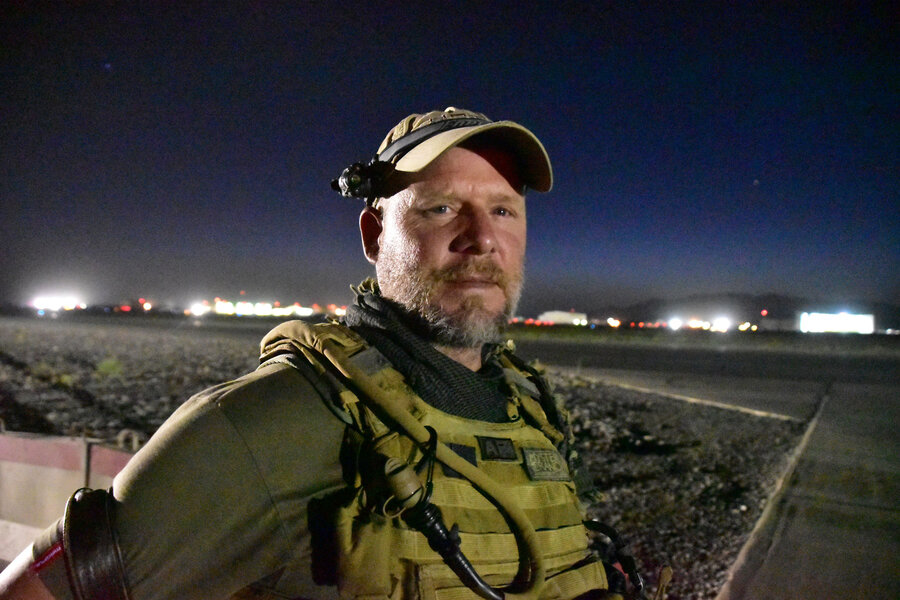Slain journalist David Gilkey gave his life to bear witness to war
Loading...
A veteran photojournalist and a translator were killed Sunday while on assignment with Afghan troops in the southern part of Afghanistan, the 28th and 29th journalists to be killed there since 1992.
David Gilkey, who had won dozens of awards for his news photography, and Zabihullah Tamanna were in an Afghan Humvee when it was hit by a rocket-propelled grenade in an apparent ambush, NPR reported. The Afghan soldier driving the Humvee was also killed. Mr. Gilkey and Mr. Tamanna were on assignment for NPR.
Their deaths are yet another reminder of the risks journalists face daily to show us the atrocities of war, as well as the humanity behind it. Their deaths also serve as a reminder of the increasing dangers for war correspondents, as international laws are ignored.
Gilkey was cognizant of these perils, Keith Jenkins, the general manager for digital at National Geographic Society, told NPR. Mr. Jenkins said Gilkey often spoke with him about how much longer he should keep keep doing it.
"Ultimately, he felt it was really important to tell those stories and to tell them to a society that can very often forget that we have people in harm's way on a daily basis," Mr. Jenkins told NPR.
“It is fair to say that David witnessed some of humanity's most challenging moments: He covered wars in Afghanistan and Iraq. He covered the conflict between Israel and Hamas in Gaza. He covered the end of the apartheid regime in South Africa. He covered the devastating earthquake in Haiti, famine in Somalia and most recently the Ebola epidemic in Liberia,” wrote NPR. “His images were haunting — amid the rubble, he found beauty; amid war, he found humanity.”
The Taliban ambushed the Humvee Gilkey and Tamanna were in about 400 yards from the main army base near Marjah in Helmand province, Maj. Abdul Qader, the deputy spokesman for the 215 Army Corp in Afghanistan’s southern Helmand province, told the Associated Press. Two other NPR journalists, Tom Bowman and Monika Evstatieva, were traveling with Gilkey and Tamanna, but were not hurt.
In his condemnation of the attack, Afghan President Ashraf Ghani said it was cowardly, and that the Taliban “ignored the differences between military, civilians and journalists, killing Gilkey and Tamanna as they prepared their reports on the war.”
For years, the Taliban took relative care to avoid targeting journalists but in recent months death threats and direct attacks on reporters have become more common, as Scott Peterson reported for The Christian Science Monitor from Kabul last month:
Coping with such threats has become part of a journalist’s job description in Afghanistan. Even as the news media have expanded and diversified in the 15 years since US forces ousted the Taliban, so too have the threats to journalists. They are now increasingly targeted by insurgents, by competing ethnic groups, and – especially for women – by angry, conservative family members who want them off the air and at home.
Gilkey, winner of the George Polk Award and a national Emmy, and Tamanna, a staunch translator and journalist who previously worked with China's Xinhua news agency and Turkey's Anadolu News, are two of the nearly 1,200 journalists to have died since 1992, according to the Committee to Protect Journalists.
Their deaths highlight the growing dangers journalists face, as they seek to bring stories and pictures of war back to the US. Americans were further made aware of these dangers when freelance war correspondent James Foley was beheaded by the self-styled militant Islamic State group in 2014.
"Foley’s apparent execution raise [sic] fresh questions about how important conflicts across the globe are covered — and the dangers freelance journalists, eager for bylines, face to report them,” wrote The Washington Post at the time, noting that The Committee to Protect Journalists has called Syria "the most dangerous country in the world for journalists."
War correspondents and journalists in countries like Syria and Afghanistan make peace with these dangers because they believe their commitment to the public outweighs the personal risks they face. In an interview with the Montior's Mr. Peterson last month, Afghan news anchor Fawzia Wahdat described how she faces threats almost daily.
“The threat is not only to journalists, but it is for all people of Afghanistan,” Ms. Wahdat told the Monitor's Scott Peterson. “I want to work for women, for the whole nation, to raise the lot of the Afghan people. Day by day, my ability [to do so] has become stronger.”
This report contains material from the Associated Press.





